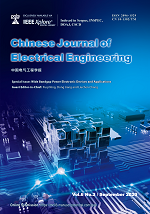|
|
Comparison of Wide-bandgap Devices in 1 kV, 3 kW LLC Converters*
Zhanbiao Gu, Jiacheng Tang, Wenming Zhu, Kaiqi Yao, Zhesi Gao, Weijie Shi, Zhiliang Zhang, Xiaoyong Ren
Chinese Journal of Electrical Engineering
2020, 6 (3):
65-72.
DOI: 10.23919/CJEE.2020.000020
Emerging wide-bandgap (WBG) devices, such as silicon carbide (SiC) MOSFETs and gallium nitride (GaN) high-electron-mobility transistors (HEMTs) provide new opportunities to realize high efficiency, high power density, and high reliability in several kHz, 1 kV input, and several kW output applications. However, the performance comparison between SiC MOSFETs and GaN HEMTs in high-voltage, high-frequency, medium-high-power DC conversion applications have not yet been investigated thoroughly. Two 1 kV, 3 kW LLC prototypes with GaN and SiC devices are built to perform a careful comparison of the prototypes in terms of parameters, power density, zero voltage switch realization, and overall efficiency. This provides guidance for the appropriate evaluation of WBG devices in high-voltage, high-frequency, and medium-high-power applications.
Reference |
Related Articles |
Metrics
|
|
